20. Dec 2021 - DOI 10.25626/0134
Lidia Zessin-Jurek is a historian and memory researcher and currently Poland expert in the ERC-Project "Unlikely refuge? Refugees and citizens in East-Central Europe in the 20th century" (2019-2024) at the Czech Academy of Sciences in Prague. She is currently working on a book project that explores flight of Polish Jews during their escape from the Nazis in the autumn of 1939. She also works for the European Holocaust Research Infrastructure Project (EHRI) and as an independent expert for the European Commission (European Education and Culture Executive Agency, EACEA).
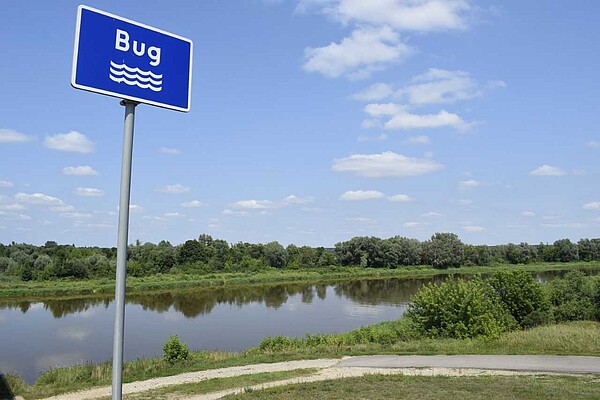
When the young jazz musician from Warsaw, Dawid Zylkiewicz, entered the leaking boat to cross the river Bug on the new German-Soviet demarcation line in late autumn of 1939, he feared that he was going to meet his death.[1] The refugee was stuck between a German border patrol behind him and a Soviet blockade in front of him. Eighty-two years later, in 2021, the young refugee student Ahmad al-Hasan, who could not swim, dove into the river Bug in the opposite direction. According to the accounts of his companions, the group was forced to cross the river, which is now the Belarusian-Polish border and is blocked by soldiers on both sides. The young man drowned thus becoming one of the victims of this ‘no man’s land’ and the forces controlling the border area.[2] In 1939 as in 2021, the border region and its natural environment were scenes of similar events with similar results – people were trapped in the open and tossed from one side to the other by the border guards.
The similarities between these refugee experiences that took place in the same geographical location have led many historians and sociologists to draw comparisons between the people blocked along the Polish-Belarusian border today and the Jewish refugees of 1939. Yet is this comparison valid? The present article will take a closer look at the arguments that have supported these perceived analogies. Such arguments have been put forward by historians, journalists and people involved in the matter, people who have mostly published in the liberal and leftist media outlets in Poland. As a historian of the 1939 refugee situation in the Nazi-German-Soviet borderlands, I will question the pros and cons of drawing such historical analogies in this case and offer my analysis of the similarities and differences between the two events.
Just after Poland began blocking the border for refugees who wanted to enter the country from Belarus in August 2021, Polish historians Piotr Laskowski and Sebastian Matuszewski, both members of the team working on the Ringelblum Archive, published an article on the media portal OKO.press comparing the current situation to that of the Polish Jews who were expelled by the Third Reich as part of the so-called Polenaktion.[3] In October 1938, the Germans deported several thousand Jews who were Polish citizens from Germany, most of them to the border town of Zbąszyń. Polish authorities stopped the refugees at the border. The Polish Minister of Defence’s sealing off of the border with barbed wire in August 2021 emboldened the aforementioned historians to draw a parallel with the reaction of the government of the Second Polish Republic. The refugees in 1938 were helped by the local population and Jewish volunteers, including Emanuel Ringelblum, the historian later known for initiating an archive documenting the life and extermination of the people who lived in the Warsaw Ghetto. In fact, the Jews expelled in 1938 suffered double ethnic exclusion: from Germany and from Poland, something which does not feature in the current debate. One could add that among current refugees at the Belarusian border are also Yazidis – that is, an ethnic minority from Northern Iraq.
Analogies between the refugee situation in Zbąszyń in 1938 and the current situation have also appeared in other Polish liberal-media outlets. In Gazeta Wyborcza, Zbąszyń was first mentioned in August 2021, though no explicit comparison to the present situation was made; however, one month later Zbąszyń clearly reappeared with the headline: “Refugees are being held at the border again. Then Jews, today others.”[4] In the Polish edition of Newsweek, Jan T. Gross claimed that the current government draws on the antisemitic traditions of the pre-war government of the Second Polish Republic, excluding refugees just as the government of the late 1930s excluded Jews.[5] As early as 2015, Gross claimed that the Poles’ hostile attitude towards the idea of accepting refugees stems from their failure to work through the history of Polish society’s attitudes towards the annihilation of their Jewish neighbours.[6] In Poland’s most widely read news weekly Polityka, one of the lead editors, Adam Szostkiewicz, also referred to the refugees from Zbąszyń and claimed that just as in 1938, the situation on the border acts as a mirror in which Polish citizens can see themselves today, a test for the state and society, which in his view has failed.[7] This remark takes us to the second frequently discussed thread.
In a rapidly written response to the events at the border, publicist Witold Bereś titled his book, Ship of Fools: Poor Poles Look at Usnarz.[8] With this he clearly refers to Jan Bloński’s 1987 essay, “Poor Poles Look at the Ghetto”,[9] which is famous among those familiar with the public debate about the Poles’ wartime indifference to the extermination of their Jewish neighbours. Bereś conducts a bitter analysis of the behaviour of the Polish state and society, dissecting the myths of hospitality, solidarity and Catholic ethics. Indifference to the present events in Usnarz, a highly publicized border village in which hundreds of refugees are trapped and living under inhumane conditions, is compared to the Catholic Poles’ attitudes towards Jews who were locked in ghettos during the Second World War. The theme of popular indifference towards refugees – similar to that felt during the Holocaust towards Jews – also appears in a conversation between the sociologists Michał Bilewicz and Michał Łuczewski published in the Gazeta Wyborcza.[10] Bilewicz suggests that the current situation shows the hollowness of the myth of the countless ‘Polish Righteous Among the Nations’, since today their descendants are unwilling to help, even though under the Nazi occupation the penalty for helping was death, and today only a fine is risked.
Both scholars claim that this is primarily an intellectual analogy, even though its political dimensions are quite obvious. When the sociologists asked the residents of the border area about this analogy, the respondents reacted with surprise at hearing the “Holocaust metaphor” used. For Bilewicz, today’s events at the border also evoke the Holocaust period for personal reasons: his grandfather hid in the same woods after escaping from the Białystok ghetto and relied on the help of local residents.
Although speaking of ‘indifference’ has become a paradigm of Polish reflection on the Holocaust, both in the past and the present, this word may be no less than a euphemism. Due to the antagonistic (rather than indifferent) attitude of the majority of Poles towards Jews in the decisive moment of the Holocaust era and the huge (anything but indifferent) public and media interest in the subject of refugees today, the word ‘indifference’ does not seem to fit the description of either past or present reality.
The issue of the ghettos raised by Bilewicz is further referred to in an interview with Jacek Leociak,[11] The renowned Polish Holocaust historian speaks about the “repetitive mechanisms of history” and even maintains that whenever he looks at today’s events, he simply “cannot escape his historical competence”. For, he has the impression that the policies he has analyzed historically are now being repeated in real time, right before his very eyes. He begins the analogies with the repetition of the sanitary-epidemiological discourse (Jews – meaning lice and typhus; refugees – meaning germs, and diseases[12]). In addition, he sees analogies in the legislative attempts to put individuals and groups outside of the law and exclude these groups from the horizon of moral responsibility. The present imposition of a state of emergency stresses the alleged threat that the refugees constitute. Their alleged incompatibility with Polish culture, furthermore, is emphasized by the government in Warsaw who presented them as sexual perverts and potential terrorists at a press conference in September. This reminds Leociak of the negative image-profiling of ‘the Jew’ in Nazi discourse.
The historian goes further, comparing – in Giorgio Agamben’s terms – the state of emergency to the ghetto as a space decreed and sanctioned by the law to strip the people trapped inside of all human qualities. In this space of inverted law, it is not the failure to help, but the rendering of help that is punishable. And the refugees themselves did not enter this space voluntarily but were forced into it on the last leg of their long journey. In Leociak’s view, leaving people in the forest and accepting the possible outcome – their suffering and possible death – also resembles “indirect extermination”, a term used in Holocaust historiography to describe death caused by the conditions in the ghettos. Summing up, the historian referred to the words of the Polish-Jewish publicist Konstanty Gebert, who expressed hope that like the ‘Righteous’ who hid Jews in the 1940s, there would now be people in the borderland who would hide refugees under their roofs away from the patrols searching the Polish forests in order to send the refugees back to the Belarusian forests.
Inferring from Jacek Leociak’s arguments, it seems that many elements shift the role of the Polish state to the position historically occupied by the Nazis during the Second World War. At the same time, the historian makes the important reservation that we are not dealing here with genocide, of course, but nonetheless with a crime against humanity.
The same argument was made by Pietro Bartolo, a medical doctor known for helping refugees in Lampedusa, during his visit to the Polish-Belarusian border. Moreover, referring to the post-Holocaust times, Bartolo asserted: “I am also deeply convinced that when all this is over, we will have a new Nuremberg.”[13] In his view, both “the tribunal and our children and grandchildren will be asking how we reacted” and will accuse us of passivity at best.
The topic of Polish complicity in the deaths of refugees at the border was also taken up by Hanna Machcińska, Deputy Ombudswoman.[14] This experienced lawyer invoked the historical Jewish context several times: calling what is happening a new painful “splinter” that will forever wound the conscience of Poles (following the author Mirosław Tryczyk’s term “splinter” which refers to the memory of Polish complicity in the extermination of Jews[15]). She also recalled the recent words of concentration-camp prisoner Marian Turski that “Auschwitz did not fall from the sky,” and Golda Tencer’s photo exhibition (subsequently made into a book) which depicts the lives of the European Jewry before the Holocaust, pictures which were kept safe by the neighbours and friends of Jewish families who perished before the eyes of Catholics.[16] The faces immortalized in the photo album remind Machcińska of the faces of refugees today, abandoned and condemned to suffer under the indifferent gaze of the Poles.
Finally, parallels between the mechanisms that led to the current blockade and the historical blockade of the Jews have emerged in the consideration of the space known as ‘no man’s land’. First, Gazeta Wyborcza published a text about refugees left in ‘no man’s land’ along the German-Soviet demarcation line in the fall of 1939.[17] The parallels were not further discussed. Later, the same newspaper, as well as Czech and Austrian press organs, published an article analyzing these similar spaces.[18] The results of their juxtaposition suggested to the authors – Michal Frankl and myself – that, in the past as now, ‘no man’s land’ is being used by state forces to rid themselves of responsibility for unwanted people. Thus, we speak of a deliberate abandonment of state sovereignty and rule of law on a patch of land, which was neither intended nor planned, but in the end has benefited the state.
Starting from this point, I would like to look at the validity of comparing the situation of Jewish refugees of 1939 stuck at the river Bug with today’s refugees, also stuck there. These deliberations will be based on the chapter of a book I am writing on Jewish refugees in the fall of 1939.[19]
Then, just as now, it is not only about the same place on the map, the role of rivers, fields or forests; it is not only the season and the cold weather that are similar. Most similar are the consequences of using a state border to trap refugees in the open air, exposing them to hypothermia, disease and death.
Both events clearly differ in scale: the number of people stuck in the borderlands between German-occupied and Soviet-occupied Poland in 1939 was much higher than what we see today in the same place. The most fundamental differences, however, do not concern the number of refugees nor their experiences – their ethnic exclusion and entrapment. Nor do they concern the effects of physiological violence, cold, hunger and death that they experience. They do not even concern the circumstances under which past and present refugees found themselves on this patch of land. Among the refugees of the autumn of 1939, as among those of today, there were above all those determined to escape war or persecution, to a more normal life.
The fundamental difference lies in the attitude that the military and police forces of the countries blocking the borders demonstrate towards the refugees. Both in 1939 and today, refugees are victims of pushbacks and a kind of ‘ping pong game’, as they say. But the objectives of the game of which they have become victims differ. Sticking to the metaphor of the game, one can say that in 1939 a “friendly game”, a match of temporary friendship, was played between the Germans and the Soviets at the border. Even the very name of the German-Soviet border agreement, the “Treaty on Borders and Friendship,” signed in late September 1939, illustrates this argument. The primary goal of the Germans and Soviets was not to play against the other side.
The no man’s land in 1939, established along the demarcation, line had first of all military purpose: along the strip both sides built bunkers and future line of defence. But as long as they had adhered to “the pact on friendship and borders”, the strategy of blocking the border and crossing points was mainly aimed at the refugees themselves; it was supposed to communicate something to them. Because of the nature of these actions, we could say that in 1939 it was the refugees whom the border was meant to harm, not the other side.
The USSR had a genuine problem with the large numbers of refugees coming from the German zone of occupation. By blocking them they were fulfilling their goal of bringing the newly occupied Polish territories under control. Soon they would deport those refugees who managed to cross over, all the way to Siberia, so they would not interfere with the border. As usual, the Soviets were mainly concerned with managing the mass of people, with subordinating them to state power. In this piece of social engineering, human beings were actually the main reason for the action taken.
The Germans, on the other hand, were eager to get rid of the Jewish refugees. In addition, they wanted other Jews to understand that they were unwelcome. The transfer of refugees across the border was turned by the Germans into a spectacle of violence – Jews were shot at when they hesitated to enter a river or a strip of no man’s land, and were left deliberately stranded, exposed and helpless in that strip.
Today, on the other hand, there exists one key difference: no one seems to actually have the explicit desire to harm the refugees. On the contrary, each side attempts to parry accusations of brutality and place responsibility – and even corpses – on the other side. Neither side wants to be held responsible for the deaths though neither side cares enough about the human suffering to alleviate it. Moreover, this time the game is played out as a conflict, not a friendly match. And this conflict not only concerns these border players, but more broadly the European Union, and to some extent the Russian Federation, and public opinion in all these places including future voters.
Belarus wants to use the refugees to punish the EU and to possibly achieve the lifting of sanctions, while at the same time trying to divert attention from the imprisoned Belarusian opposition. The Polish government wants to send the message: ‘your strategy is ineffective; you will not win’. The latter is also playing to a domestic audience by asserting, ‘we are more effective, we will win, we will defend the border’ (and Europe, as the governmental advertisement declares). Refusing to accept EU Frontex assistance or diplomatic mediation is also a communication strategy in this game. The Polish government wants to argue that this is a matter of national raison d’être. They have long refused to consult with the European community on this matter, manifesting another step towards political autarky (or self-isolation).
Although the Polish government shows no shame about its blatantly callous attitude towards people being brought to the brink of death, it goes so far as to forbid journalists from entering the area because it does not want to shock the public with the image of human suffering caused by its attitude. The government aims to blame the refugees themselves for their own plight, but even more so aims to pin the blame on the universally recognized cynical policy of the Belarusian president (in doing so, Poles have at least a modicum justification).
Today, the addressees of the message following the decision to block the refugees on the border are not the refugees in the first place (in the second place, yes), but the ‘players’ on the other side, as argued above. The message being sent to the refugees, on a secondary level only, is ‘do not come’. As we see today, this is primarily a symbolic game – refugees do not play a role in it as subjects; they are used more as objects or even as instruments now than the refugees in 1939 were: hence the numerous comments about using refugees as weapons. A weapon is not a subject, it is an object. The suffering of the refugees today is a side effect of the policies that are in pursuit of other goals.
Such suffering was not a side effect but the very goal in 1939, especially for the Germans. The focus of ‘no man’s land’ violence on Jewish refugees foreshadowed the Shoah and provided a laboratory for forms of violence, the results and practices of which – separation, concentration in ghettos and camps, destitution and abandonment – would be developed during the Shoah itself. This difference ultimately confirms the uniqueness of the 1939 ‘no man’s land’ in this area and wartime violence against Jews.
In both cases, there is a politically sanctioned exposure of unwanted humans to the elements, an abandonment of people to nature – in the first case enabled by war and in the second by a state of emergency, introduced at the border by the Polish parliament. In 1939, the forces of the natural environment were mobilized as a weapon against humans. Today, the weapons are the refugees themselves, who are being toyed with in order to send a message. It is not the refugees who are ultimately at issue – but they, unfortunately, are the ones who are suffering from this two-sided game of cynicism and political posturing.
Despite this important difference, two elements are similar between today and 1939. The first is the creation of a lawless space and abusing the possibilities such a space offers. In a legal sense, there is no ‘no man’s land’ in the recent events. The territory where most of the refugees are trapped is under Belarusian sovereignty. But the mechanisms governing such a space as ‘no man’s land’ are nonetheless fulfilled: we are dealing with a de facto blockade of people at the border who cannot exit a piece of land. Moreover, both sides agree on setting up a territory in which their own previously adopted state laws are null and void. The Polish guards are moving the refugees back across the border, treating the strip of Polish territory where they found them as a space where asylum law does not apply. In other words, a ‘no man’s land.’ In mid-October, the Polish parliament legalized the expulsion of refugees who had managed to cross the Polish state frontier.
The border is used to create a space where no one is responsible for an unwanted person, rejected on ethnic and cultural grounds. Such rejection was previously driven by antisemitism, but today it is motivated by islamophobia and racist sentiments (and more generally, the fear of migrants). Using the space as a ‘no man’s land’ means that the state gives up its sovereign rights.[20] Yet, by establishing this space, both sides – while howling about sovereignty and protecting their ‘Fatherland’ (ojczyzna) – ironically dispense with the actual normal sovereign rights of independent states. Withdrawing across the border and failing to help the freezing people blocked at the border places the state in the position of an actor deeply implicated in the suffering and deaths of these people, which is the other undeniable common element between the past and present situations.
Although the present text mainly discusses the situation on the Polish border, the context of the topic presented here could be considered in a broader international framework.[21] Now, as always, the juxtaposition of Jewish history with other forms of violence on human beings is controversial because of features that demonstrate the uniqueness of the Holocaust. In this case, however, we are dealing with violence against refugees that preceded the Holocaust proper. Shortly after 1939, the Germans’ goals and methods changed dramatically: they did not just get rid of Jews by expelling them, but they began obsessively detaining and murdering them.
Most of the analogies cited today by scholars, observers and those involved in aid are not so much about the comparison itself since they touch on the realm of claims and of recognition, or simply aim at mobilizing social attention. Yet, their political or ethical purposes do not cancel out the implied similarities of the two situations. Invoking them not only has the effect of catching people’s attention, but it also stirs controversy.
The reaction that rejects the comparison of today’s refugee situation to Jewish history stems from two opposite attitudes: the first is an ahistorical fear of relativizing the victims of the Shoah when it comes to the stage before the actual Holocaust (this context is also still strongly present in the German public sphere that is currently witnessing a new dispute among historians, which has even been tentatively dubbed “Historikerstreit 2.0”over the postulate to de-tabooize the comparisons with the Holocaust, mainly in the context of colonial crimes[22]).
The second attitude – which can especially be seen in the popular reaction to the comparison on internet forums – stems not from a defence of the paradigm of the uniqueness of Jewish suffering, but from the rejection of it. The critique of comparison is accompanied by impatient questions: does everything really have to be compared to the Holocaust? Is it impossible to write a text without reference to Jewish suffering? What we have here is a manifestation of fatigue with memory and its Jewish thread, but also a rejection of the paradigm of Jewish suffering in the spirit of another topos, which in the German debate has been abbreviated as Schlussstrich (so in fact not a debate but rather an end to it). It is an effort to de-emphasize the subject of Jewish victimhood by drawing a line through it and to contribute to forgetting the effects of antisemitism.
Although, at first glance, the situation of Jewish refugees and the migrants and refugees from the Near and Middle East who are blocked on Polish soil produces many similarities, a systematic comparison not only reveals common elements, but also important differences. Therefore, if carefully carried out, comparative historical analyses are not to be feared.
This text has been written as part of the ERC-Project "Unlikely Refuge? Refugees and Citizens in East-Central Europe in the 20th Century" (grant agreement No 819461).
Lidia Zessin-Jurek: Trapped in No Man’s Land: Comparing Refugee Crises in the Past and Present. Cultures of History Forum (20.12.2021), DOI 10.25626/0134.
Copyright (c) 2021 by Imre Kertész Kolleg, all rights reserved. This work may be copied and redistributed for non-commercial, educational purposes, if permission is granted by the copyright holders. For permission please contact the editor.
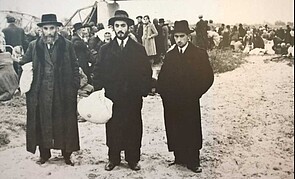
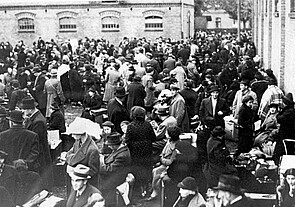
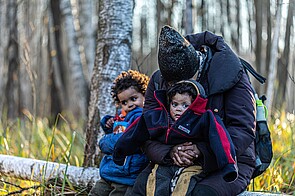
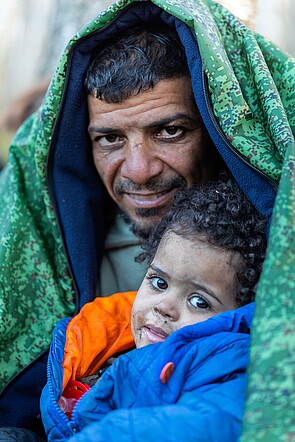
About the current situation of refugees in the area that was sealed off by Polish border guards on the Polish side of the border to Belarus see the recent BBC news report: 'Migrants freezing to death on the Belarus-Poland border' (24 September 2021)
Lidia Zessin-Jurek · 20.04.2023
A History that Connects and Divides: Ukrainian Refugees and Poland in the Face of Russia’s War
Read more
Interview · 08.03.2021
A Ruling Against Survivors – Aleksandra Gliszczyńska-Grabias about the Trial of Two Polish Holocaust...
Read more
Lidia Zessin-Jurek · 03.09.2019
Hide and Seek with History – Holocaust Teaching at Polish Schools
Read more
Maciej Czerwiński · 11.04.2019
Architecture in the Service of the Nation: The Exhibition ‘Architecture of Independence in Central E...
Read more
Marta Bucholc and Maciej Komornik · 19.02.2019
The Polish ‘Holocaust Law’ revisited: The Devastating Effects of Prejudice-Mongering
Read more
Get this article as PDF download (including pictures).